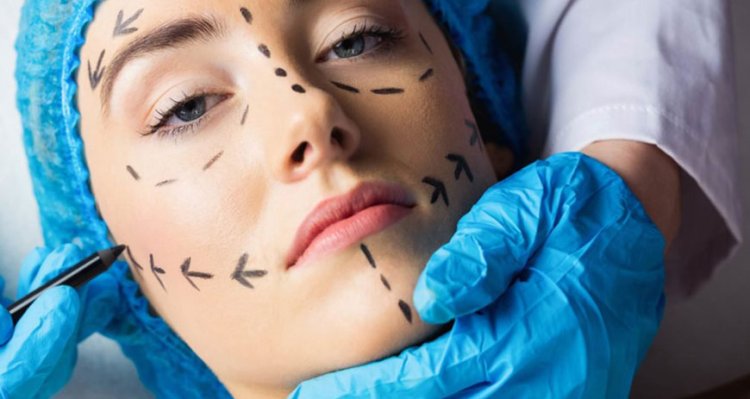The Role of Microsurgery in Facial Reconstruction in UAE
The ability to manipulate and reconnect delicate tissues and blood vessels under high magnification has revolutionized the possibilities of facial reconstruction in the UAE, offering hope and improved quality of life to many patients.
Share this Post to earn Money ( Upto ₹100 per 1000 Views )

Facial Reconstruction Surgery in UAE: Enhancing Precision and Outcomes
Facial Reconstruction Surgery in UAE(جراحة إعادة بناء الوجه في الإمارات العربية المتحدة) plays a vital role in restoring form and function to individuals who have experienced facial trauma, congenital deformities, or the effects of tumor removal. Within this specialized field, microsurgery stands as a cornerstone, enabling surgeons to perform intricate procedures with enhanced precision and ultimately achieve superior aesthetic and functional outcomes.
Understanding the Principles of Microsurgery in Reconstruction
Microsurgery involves surgical procedures performed using specialized operating microscopes and miniaturized instruments. These tools allow surgeons to visualize minute anatomical structures, such as blood vessels and nerves that are often less than a few millimeters in diameter. The core principle of microsurgical reconstruction lies in the transfer of healthy tissue from one part of the body (the donor site) to the defect area on the face (the recipient site). For this tissue transfer to be successful and remain viable, the blood supply to the transferred tissue must be meticulously re-established by connecting the tiny arteries and veins at the recipient site using sutures that are often finer than a human hair. This intricate process of microvascular anastomosis is the hallmark of microsurgical reconstruction.
Applications of Microsurgery in Facial Trauma
Facial trauma resulting from accidents, burns, or other injuries can cause significant tissue loss and complex deformities.
Microsurgical Reconstruction of Congenital Facial Deformities
Children born with congenital facial deformities, such as cleft lip and palate or craniofacial anomalies, often require multiple surgical interventions throughout their development. Microsurgical techniques can be invaluable in addressing these complex issues. For instance, in certain cases of cleft lip and palate repair, microsurgical approaches can refine the reconstruction of the lip and nose, leading to improved symmetry and function. In more complex craniofacial reconstructions, the precise manipulation of bone and soft tissues, facilitated by microsurgery, can help to normalize facial contours and improve the child's overall quality of life.
The Role of Microsurgery in Post-Oncologic Facial Reconstruction
The removal of facial tumors, whether benign or malignant, can often result in significant tissue defects that require reconstruction.
Advancements in Microsurgical Techniques and Technology
The field of microsurgery is constantly evolving, with ongoing advancements in techniques and technology that are being incorporated into facial reconstruction in the UAE. Improved operating microscopes offer higher magnification and better illumination, enhancing the surgeon's ability to visualize delicate structures. Refinements in micro-instrumentation allow for more precise tissue handling and suture placement.
The Multidisciplinary Approach and Microsurgery
Successful facial reconstruction, particularly when involving microsurgical techniques, often requires a collaborative, multidisciplinary approach.
FAQs about the Role of Microsurgery in Facial Reconstruction in UAE
What is microsurgery and why is it important in facial reconstruction? Microsurgery uses microscopes and miniaturized instruments to perform intricate procedures on small tissues and blood vessels, enabling complex tissue transfer and improved outcomes in facial reconstruction.
How is microsurgery used in cases of facial trauma? It allows for the transfer of large, well-vascularized tissue flaps from distant sites to reconstruct complex defects and restore function.
What role does microsurgery play in correcting congenital facial deformities? Microsurgical techniques can refine the reconstruction of structures like the lip and nose in cleft lip and palate, leading to improved symmetry and function.
How is microsurgery utilized in post-oncologic facial reconstruction? Free tissue transfer facilitated by microsurgery can fill large defects after tumor removal, providing adequate tissue bulk and coverage, especially in irradiated areas.
What technological advancements are enhancing microsurgical facial reconstruction? Improved operating microscopes, refined micro-instrumentation, and intraoperative imaging techniques are all contributing to better outcomes.
Why is a multidisciplinary approach important in facial reconstruction involving microsurgery? Collaboration among specialists ensures that all aspects of the patient's functional and aesthetic needs are addressed comprehensively.
What are the ultimate goals of incorporating microsurgery in facial reconstruction in the UAE? To achieve superior aesthetic results, restore essential functions, and improve the overall quality of life for patients with facial defects.
















